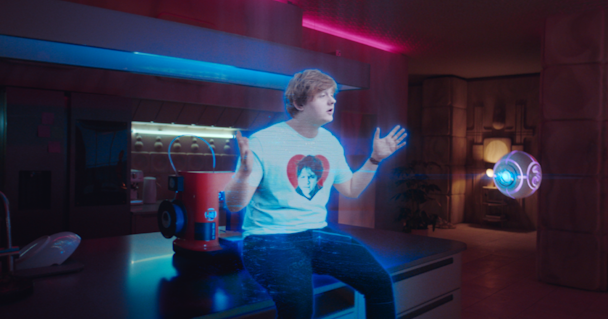5G has an image problem – here's how advertisers can solve it
Amid the UK's Huawei U-turn, 5G is in the headlines once more for all the wrong reasons. BMB chief exec Jason Cobbold – who worked on the launch of 3G with Three Mobile – argues that though there are radical opportunities posed by the tech, but these need to better communicated by advertisers in order to convert consumers.

Three (which recently rolled out 5G ads featuring a holographic Lewis Capaldi) has admitted the tech confuses customers
The rollout of 5G technology is one of the biggest advances in a generation, and the ongoing controversy over Huawei’s role in its future just goes to show the enormous power of 5G’s potential.
As well as national security concerns, 5G has become weighed down by hype and crazy coronavirus conspiracy theories. Despite the promise of sizeable change, and billions spent communicating this, 5G advertising is also falling flat with consumers. That's because the question of 'what do I get out of this as a consumer?' is soon lost when the first thing you hear as a consumer is that 5G is a security threat planned by China.
I previously worked on the launch of 3G with Three Mobile, and with Vodafone for a long period of time, so I’ve seen these tech rollouts in different guises. But I can’t think of another launch where we’ve seen this extraordinary paradox – awareness of 5G is rising but consumer desire to buy 5G services is going down.
The usual hype cycle has been thrown into chaos, and this is due to a number of factors. For a start, consumers are on their guard against the false promise of great new dawns from technology. While 5G might offer something genuinely exciting, it’s caught up in the language of over-promise dating back as far as 2000, and the first dot com boom, and heard most recently in the launch of the latest iPhones.
5G’s giant infrastructure shift is radical – it bears some comparison with the Victorian redesign of cities based around modern sewer systems highlighted in an excellent TEDx talk 'Cities are People' by Nick Tyler.
This is difficult to communicate in advertising. Huge possibility quickly becomes very abstract and hard to bring alive for your audience. Saying that you can download a Netflix movie in six-seconds, or can chat to your mum on the phone with no latency issues, end up feeling insignificant when people already have 4G.
Added to this, the network providers and big tech brands tend to be myopic in their communications approaches –there’s an extraordinary amount of internal industry competition and variance in technology, making 5G even more confusing for customers.
Advertising 5G is tricky. Three UK’s press and social media ads for its 'Real 5G' campaign were recently banned by the Advertising Standards Authority (ASA), and the company’s defence – revealingly – was that the technicalities were not well understood by consumers, plus there was a limit to how much it could say in the ad. Elsewhere, BT’s biggest campaign for 20 years, 'Beyond Limits,' ducked the 5G question entirely and focused instead on educating kids. For its part, EE created a 5G AI Supermodel stylist for the 2020 Baftas Red Carpet, though she didn’t quite match up to the celebrity company she was keeping.
So, building on the strong awareness of 5G, how can advertising start to work better in terms of increasing consideration and converting consumers?
First of all, recognise that language matters. How do your communicate exponential change when language is incremental? Tech brands trade cliches frequently, but this washes over people and prevents them reaching a clear understanding. Search for terms that are plain speaking, and understand that part of the problem is that the language of revolution is overused in tech communications. Too often, tech revolutions turn out to be simple evolutions.
Then work on finding the perfect metaphor to paint visual pictures of the leap that 5G will provide. This will be really helpful for consumers, making the potential of the technology as concrete as possible in their minds.
Finally, don’t be afraid to embrace the unknown. As we’ve all come to realise in recent months, science is about uncertainty and 5G brands shouldn’t pretend that they know everything the technology will be capable of delivering.
This approach often unnerves advertisers but there’s never been a better time to embrace it.
